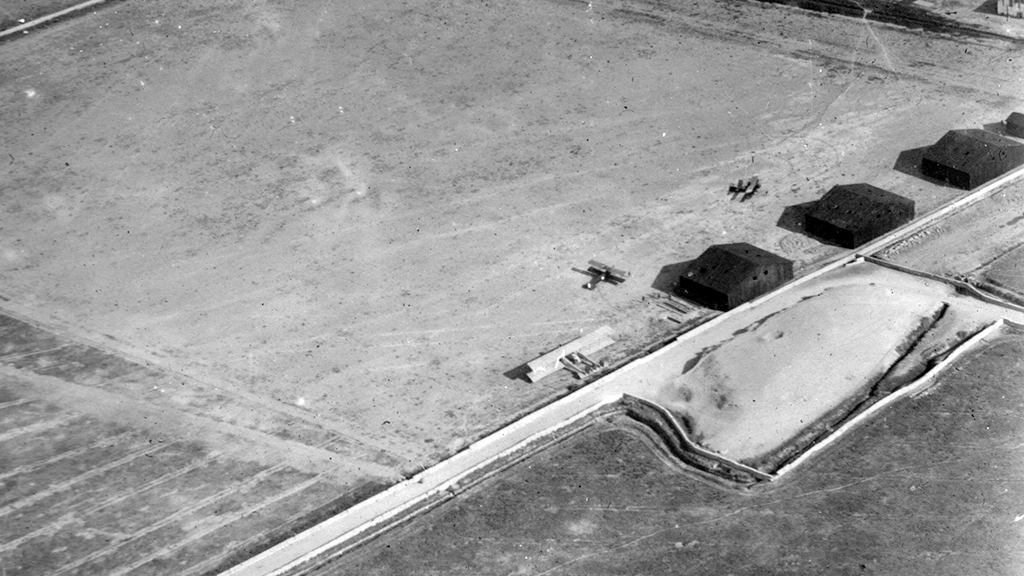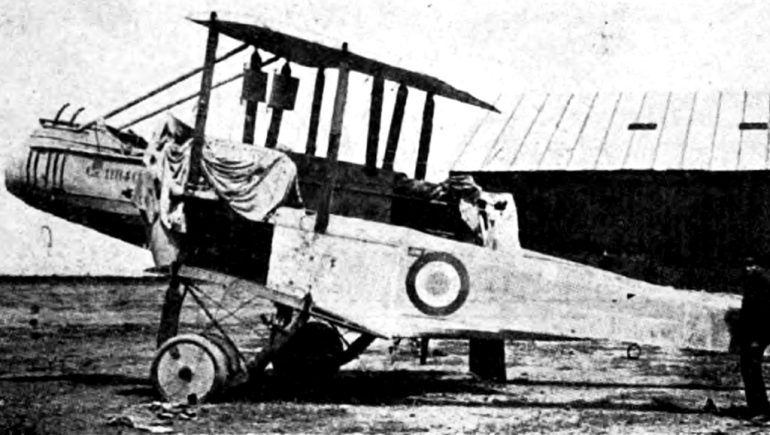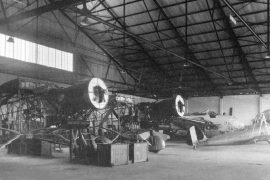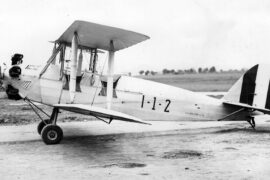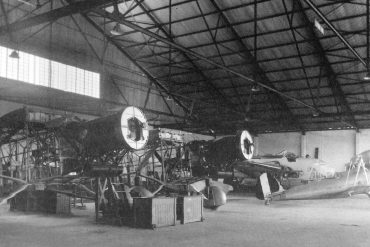In early 1921, the Gio Ansaldo & Co. S.A.S.1, the Turin-based Italian weapons manufacturer, sent several commercial missions to a number of countries in South America with the purpose of promoting its very own successful line of aircraft, as well as others from different Italian manufacturers. In February 1921, one of such missions arrived at Callao harbour in the city of Lima, the Peruvian capital, with great hopes of establishing successful business relationships in the South American country. Led by engineer Aldo Pizzini Z. and composed of Italian Air Force Captain Enrico Rolandi Zanelli, former Chief of the Aerobatics School at Furbara, Italy, and Lieutenant Giovanni Ancilloto, a highly decorated Great War veteran as well as an ace. Alongside these men also arrived, as business and support personnel, Mr. Bárbaro Cornaro as representative for the Ansaldo Company, and mechanics Edmundo Lenzi and Eduardo Chio Lierio. The mission brought two Balilla, two SVA.52 and two A.300/2 two-seat observation biplanes as well as a single Caproni Ca.5 heavy bomber.
Once the mission representatives completed filling the customs and legal paperwork required by the Peruvian authorities to allow both the interment of the aircraft as well as business operations in the country, the mission was finally able to begin activities, and by the end of March 1921 it had established its operations center in Maranga airfield, a small runway located a few miles southeast from the Callao harbour that served as base for the Peruvian Army´s Centro de Aviación Militar (Military Aviation Center-CAM). Shortly after, the mission achieved its first success, managing to sell the Ca.5 bomber to Mr. Pablo Nosiglia, a Congressman for the Cañete district, who also acted as representative for the Ansaldo & Co. S.A.S. in the country.
The Promotional Flights
On the morning of May 1, 1921, a flight to the city of Trujillo, performed by Enrico Rolandi Zanelli aboard an Ansaldo A.300/2, marked the debut of the mission’s flying activities over Peruvian territory. The flight, which carried Commander Juan Leguía S. as passenger as well as a payload of 300kg, was used to establish a weekly postal service between Trujillo and the capital. Both aviators returned to Maranga the next day, after completing the return flight in a total of 3 hours and 26 minutes.
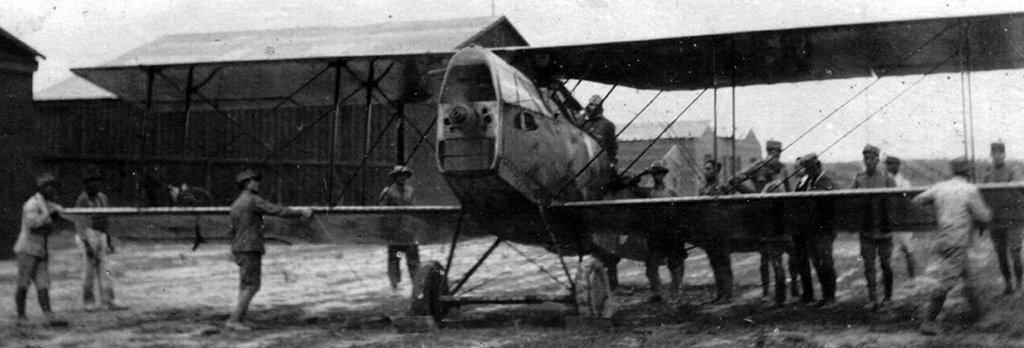
On the morning of May 21, however, Enrico Rolandi performed his most daring flight to date: Leaving Maranga aboard an SVA.5, the pilot landed on a makeshift airfield at San Andrés, Pisco, located about 245 kilometers (155 miles) south of Lima, where he refuelled. After overflying Ica, Huancavelica and Ayacucho, he continued advancing to Apurímac, where the weather became increasingly dangerous and forced him to return to Lima. While he could land in Ayacucho, the aviator preferred to return to Maranga, landing there after five and a half hours. Two days later, with reports of better meteorological conditions along the route, Rolandi departed again, following the same route and heading bound for Cusco, deep within the Andes mountain range, his destination. Facing this dangerous feat equipped only with a bottle of oxygen and the generic indication to arrive at a city with square plaza and four towers, Rolandi managed to reach the capital of the ancient Inca Empire, where he was welcomed as a hero by a cheering crowd. After a few days in the city, the Italian pilot took off again heading towards Puno, on the shores of Titicaca, the highest freshwater lake in the world, landing in Sicuani where he remained until June 6 before taking off again with the aim of reaching Puno. However, an engine malfunction prevented him from completing this flight, forcing the pilot to make a brief landing in Pucará to perform the required engine repairs. Once everything was sorted out, the Italian proceeded to his destination, arriving in Puno on the last lights of the day at 1720 hours. After spending several days performing exhibition flights, Rolandi’s “tour” finally ended on June 23, when his aircraft’s propeller and lower wings became badly damaged during an accident, forcing him to return to Lima by land.
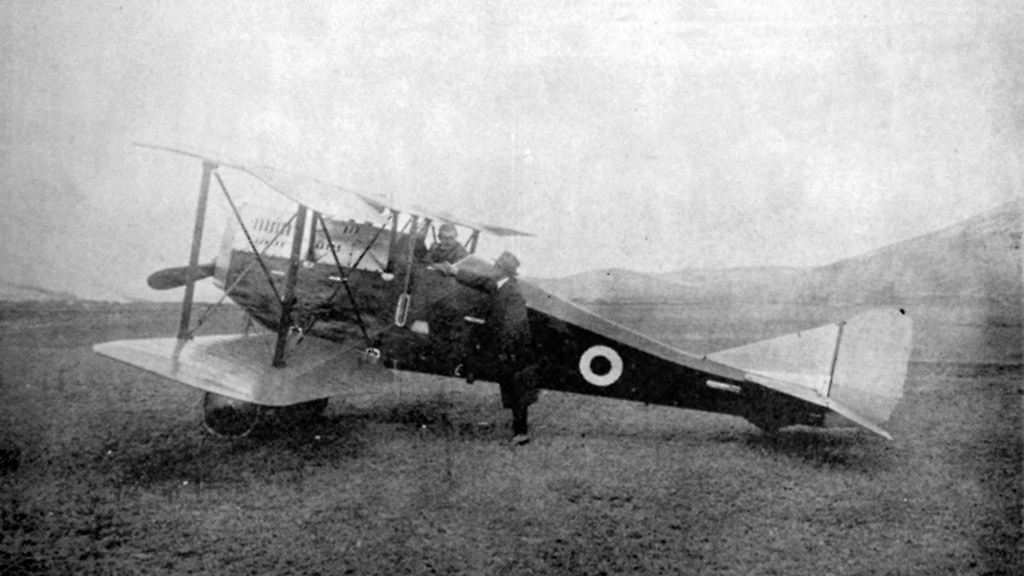
Unknown to this date was a collaboration between the so called Compañia Nacional de Aviación, operating from Bellavista airfield and managed by the Curtiss Motor and Aviatión Co., and the Ansaldo mission. In July 1921 Lloyd R. Moore, Chief of pilots at the CNA, made one of the organization’s finest flights around the same time when he flew from Lima to Cajamarca – at a distance of over 600 miles – aboard an SVA.9 from the Ansaldo commercial mission, carrying César Lecca Reátegui, a student, as co-pilot. He departed Bellavista in very heavy fog – a feature of flying in and around Lima in the middle of the winter, the very stuff of legends. Arriving in Trujillo to refuel, the aircraft departed again on July 19 and, after 50 minutes of flight and guided only using compass navigation and geographic references only, they reached Shultin, outside the city of Cajamarca, in a makeshift landing ground in the district of Belenpampa. The aviators were received by an enthusiastic population who organized three days of celebrations on their behalf.
On July 22, after completing their preparations, the pilots boarded the SVA.9 to continue their journey to Chachapoyas, the entry to the Amazon forest. As the locals anxiously awaited the departure of the aircraft and as the pilot was beginning his take-off run, a cow that was grazing at the edge of the field crossed in front of the aircraft, scared by the sound of the approaching flying machine, causing it to crash and overturn, rendering it unflyable. Fortunately, none of the aviators were seriously hurt and they escaped the wreck with only minor injuries.
A few days later, on July 27, Enrico Rolandi went back in the air, heading to Arequipa where he remained until August 4, when he took off again flying south towards La Paz, the capital of Bolivia. Shortly after take-off, however, an engine failure developed and forced him to crash-land his aircraft, preventing the Italian aviator from completing his planned raid. Despite these setbacks, Rolandi´s endeavours allowed the mission to receive orders for two SVA.9 aircraft, paid by the cities of Cuzco and Puno. These aircraft were eventually delivered in Mollendo harbour in September 1921 and, due to a lack of pilots and technical personnel required for their operation, remained in the harbour customs storage area for several years.
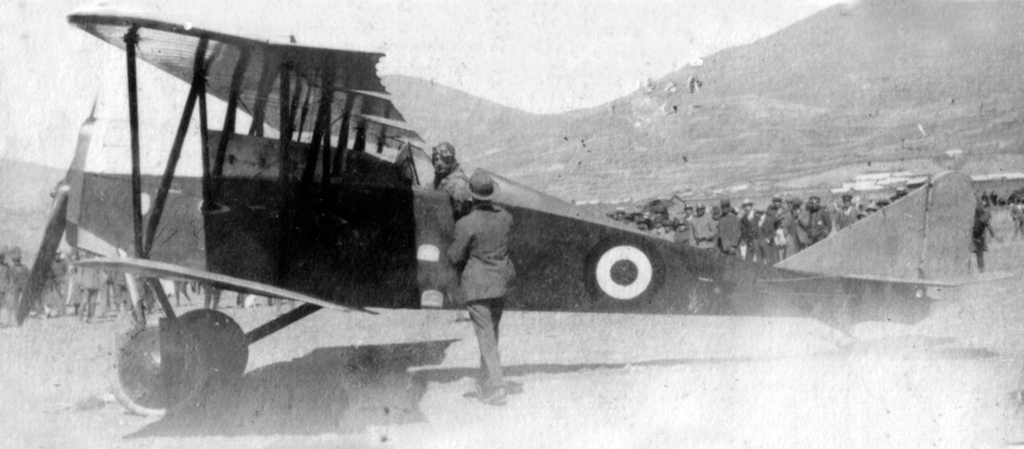
Meanwhile, on May 2, another notable feat took place, this time by none other than Great War Veteran Lieutenant Giovanni Ancilloto who, at 0549 hrs, took off from Maranga airfield aboard an Ansaldo A.1 Balilla and headed east towards the Andes mountain range. His destination was the city of Cerro de Pasco, located 209 km (130 miles) east of Lima at a height of 4,379.98 m (14,370ft), which was reached after roughly 45 minutes of flight. As the SVA.5 wheels flew by the Italian touched the ground on a makeshift field set up on the city outskirts, a large crowd which had gathered there for the occasion gave him an effusive reception. The flight was headline on the newspapers nationwide and worldwide next day not only because it meant the first visit of an aircraft to the area, but also due to the fact that this flight had set aviation records for high altitude landing and take-off.
Six days later, on May 8th, Ancilloto began his return journey taking off at 1115 hrs and heading to Lima, landing at Maranga at 1205 hrs carrying with him not only the satisfaction of a record set but also a Maltese cross, made of solid gold, presented to him by the city’s mayor in acknowledgement of his visit. Ancilloto performed yet another daring flight a few days later when, on May 23, he departed from Maranga at 1030 hrs aboard the remaining “Balilla”, heading towards the city of Huancayo, located roughly 185 km (115 miles) southeast of the capital. Once again, the altitude and adverse weather conditions proved no match for the ace´s skills and the Italian landed safely at his destination after an hour and 45 minutes flight. After spending a few days in the city, where he was subject to the warm hospitality of the locals, Ancilloto returned to Maranga on June 4, 1921.
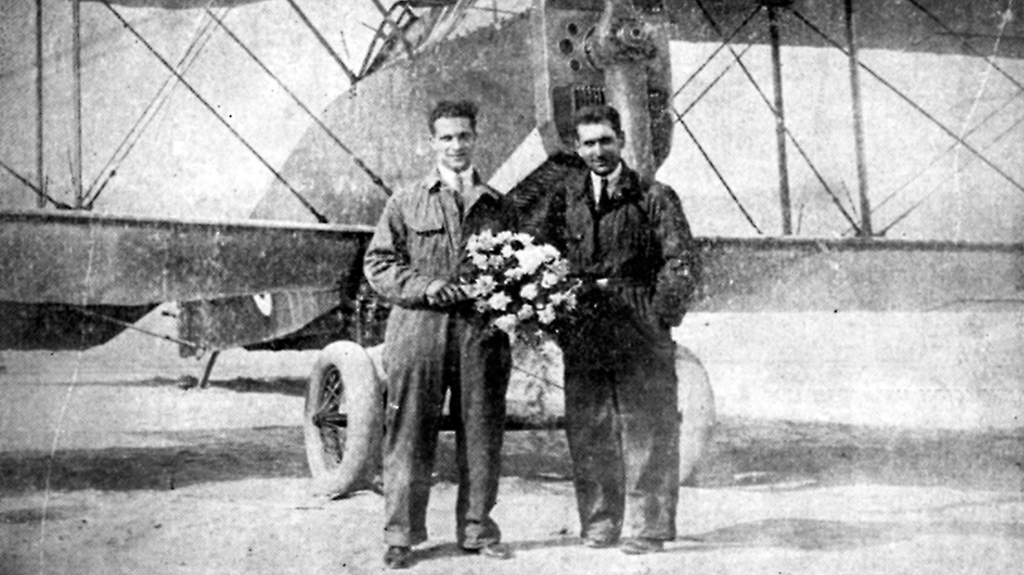
The achievements of the Italian aviators didn’t go unnoticed to the members of the recently established British Aeronautic Mission in Lima; shortly after Ancilloto’s highly publicized flight to Cerro de Pasco, Herbert Martin Sisson, the newly appointed director of the Centro de Aviación Militar, also decided to paid a visit to that city, landing at Cerro de Pasco on the morning of May 19, 1921 aboard a Bristol F.2B. Seated in the back seat of the “Brisfit” was Mr. Mac Carrigle, an Inca Film Co. employee who, thanks to the use of a makeshift film camera rack, was able to record the first aerial footage of the Andes mountain range ever.
Ancilloto and Rolandi were not the only names making it to the front pages of the Peruvian -and worldwide- newspapers during that time. Count Aldo Barbaro Cornaro, head representative for the Gio Ansaldo & Co. S.A.S, also carried a number of promotional flights during his stay in Perú. The most important was an attempt to link the cities of Puno, in Perú, and La Paz, the capital of Bolivia, carried out between October 11 and 12, 1922. Using an Ansaldo SVA.5, Count Cornaro took off from Puno armed only with visual references and his aircraft compass. A failure in his aircraft compass near Yunguyo, however, had him resorting to use the Illimani peak as navigation aid in order to reach his destination. Minutes later, unfortunately, a front of mist caused him to lose sight of the mountain and, therefore – with fear of getting lost and short of fuel – he decided to land on a plain located near Pucarani. Arriving at this town on the back of a mule, the pilot was able to reach the reception entourage that was waiting for him in La Paz, from where they came to his assistance with more gasoline. The next day he took off again heading to El Alto city, arriving over this location at around 10 in the morning. As he was approaching the landing strip prepared for his arrival, however, his SVA.5 engine failed and the Italian was forced to perform an emergency landing, seriously damaging his aircraft in the process. Repairs would take about 7 months to be completed.
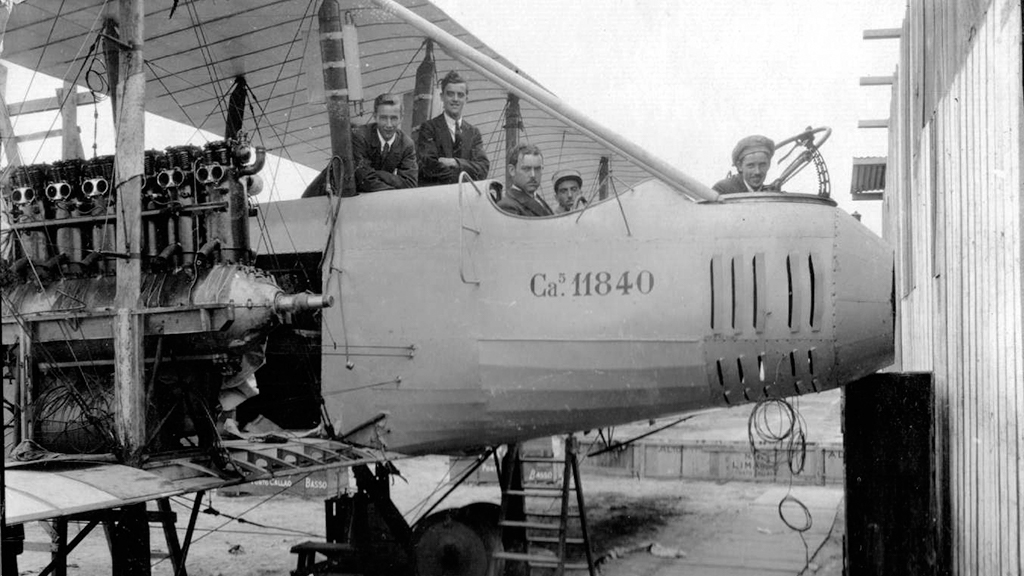
Count Cornaro’s flight, the first happening both in Perú as well as Bolivia, covered a distance of more than 210 km over the altiplano and the Andes mountain range. Cornaro remained in Bolivia for several months, making demonstrations in favour of the company. Unfortunately, during one of such enterprises Count Cornaro lost his life in a flight accident on June 21, 1923. Up to this day, many Bolivians remember Cornaro´s figure as one of the precursors of that country civil aviation.
It is also worth to mention that while the focus of the Ansaldo commercial mission was to promote the sale of the diverse array of aircraft offered by Italian aircraft industry, there were also a handful of subordinated projects that were offered to the Peruvian government as well, notably the setting up of aerial routes for commercial services as well as the creation of a civil aviation school. Unfortunately – for the Ansaldo company interests, at least – by the time of its arrival the Curtiss Aeroplane and Motor Company representatives had already secured both the civil aviation school and the airmail service for the country3. A third project offered was probably the most ambitious, as it consisted of the setting up of an aircraft factory in Lima, complete with jigs, tooling and all required trained personnel and licenses to produce a number of aircraft types. While potentially a game changer for Peruvian future interests, the timing of the proposal was not adequate and this, together with the lack of vision of the men running both the country and the armed forces left this proposal to fade away unattended.
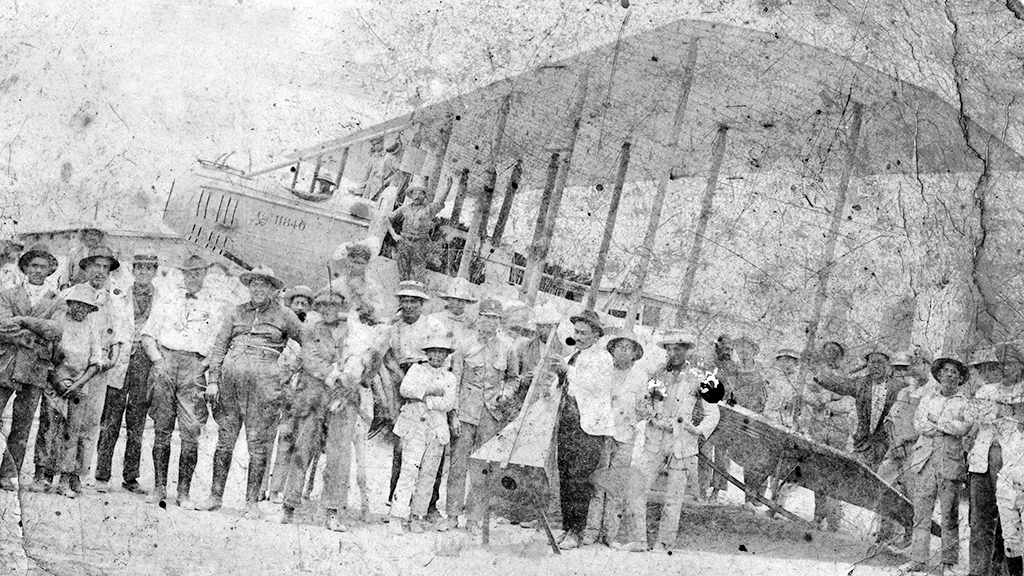
While it failed to achieve its most ambitious goals, the Ansaldo Commercial mission’s venture in Perú cannot be regarded as a complete failure as – thanks to the exercise of a good business strategy, which included a number of widely publicized flights to the interior of the country – it still managed to secure orders for a reduced number of aircraft. With mixed fortunes and after completing some additional flight activities, the mission sold its surviving aircraft to private individuals and institutions – aircraft which later found their way into the Servicio de Aviación del Ejército (Army Aviation Service or SAE) – as donations, after which the mission returned to Italy in late June 1921. Unbeknownst to the Italians was the fact that their flights had become of utmost importance for the future development of aviation in the country, as they demonstrated the feasibility of employing aircraft to connect distant and remote areas of the Peruvian territory.
